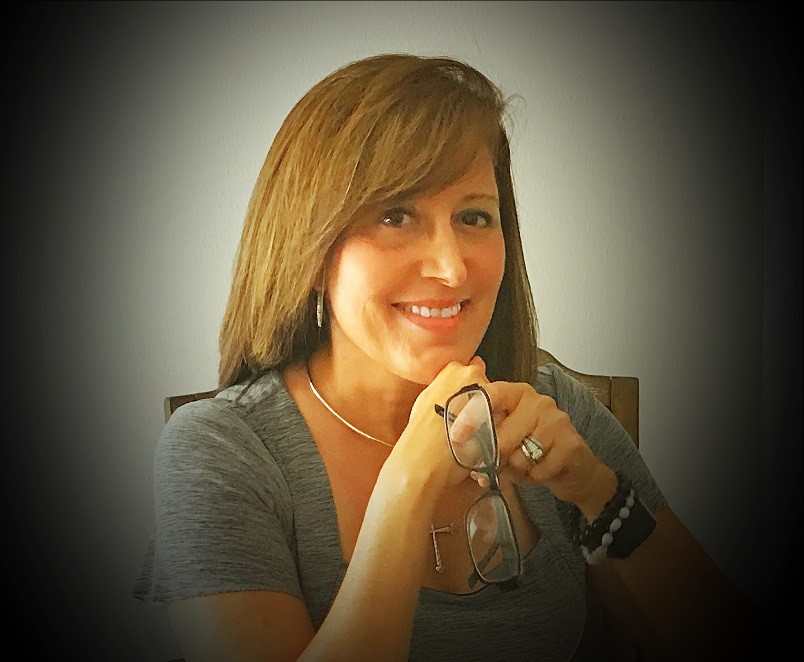There are many different ways to share your story. Especially now, in the digital age, it’s easier than ever to connect with others from around the world. Whether you can personally relate to their experiences, or their story introduces you to a new perspective, it can be helpful to know that you’re not alone in this crazy world.

For unilateral Nucleus 5 recipient Susan, telling her story means starting at the beginning: as a young girl who struggled in school and often got in trouble for not listening.
Doctors told Susan that she was likely born with hearing loss, although it went undiagnosed throughout her childhood. Finally, in 10th grade, she was tested and diagnosed with hearing loss and began wearing hearing aids.
Years later, when she began her career as a teacher, the hearing aids no longer provided the sound she needed. She began to look for other solutions, but after someone told her that “only deaf people were allowed to have cochlear implants,” she didn’t think they were an option for her.
“For whatever reason, I believed that I didn’t qualify— I had been told that, so that was it,” Susan said.
The turning point for her was many years later, when her daughter-in-law and granddaughter came to visit.
Susan recalls that she came home from work one day, said hello to her granddaughter sitting at the kitchen table, and walked to her room to change. The door closed loudly behind her, but she thought little of it as she changed from work clothes to regular clothes.
However, when she opened the door, she found her granddaughter in the doorway with huge tears in her eyes. Confused, Susan asked her daughter-in-law what had happened.
“My daughter-in-law said my granddaughter had been running behind me, calling my name with her arms outstretched, and the door slammed right in her face,” Susan said. “That was very painful to me.”
She had already experienced a strained relationship with her sons because of her hearing loss. It was in that moment that Susan decided she wasn’t going to lose her granddaughter because she couldn’t hear.
She immediately opened her computer and began typing into the search engine:
“What to do if you can’t hear anymore?”
“What if you can’t hear your students?”
“What if you’re going to lose your job?”
“What to do?”
The name of a local hearing loss advocate kept popping up in the search results. It was 11:30 p.m., but desperate for answers, Susan sent her an email explaining that she hated not being able to hear her students, children, and grandchildren. She desperately needed an answer.
Fifteen minutes later, Susan received a reply:
“Can you come in tomorrow?”
Filled with relief, Susan called off work and went in the next day. She told the advocate her story—about struggling to hear, to socialize, to work in the classroom environment. About how she was told in the 1980’s that she didn’t qualify for a cochlear implant.
The advocate suggested that, over two decades later, it was worth getting a second opinion.
Sure enough, when Susan got her hearing checked she found out that she did qualify for a cochlear implant. She immediately scheduled the surgery to receive an implant on her left side.

A month later, after the surgery and recovery, Susan was fitted with a Cochlear processor.
“That was the best, scariest, most exciting, most beautiful day of my life,” she recalled.
Susan remembers that the process of learning to hear with a cochlear implant wasn’t instant, and at the beginning it was frustrating to try and comprehend so many sounds at once. But after her audiologist helped adjust her settings, she began to hear the sounds that mattered most.
“As time went by, the squeaks and bells and whistles started to disappear and voices started to emerge—human voices. Now there’s no difference at all between a human voice and what I hear,” Susan said.
She said her Cochlear Implant has created an “explosion of sound” that has affected every area of her life.
“It’s enabled me to do so many of the things I struggled to do for so long, and so many of the things I had lost—relationships, achievements, opportunities, and confidence,” Susan said.
Shortly after her implant was activated, Susan spent a week writing about her lifelong journey from silence to sound. She considered it a personal, therapeutic exercise and put it away in a drawer, never planning to publish it.
However, after dozens of conversations over the following years with families who were considering a cochlear implant and had questions about her experience, she realized it might be time to share her story.
In April, Susan published her experience in a memoir, titled, “Out of My World, Into Theirs: A Memoir on Overcoming Deafness.” She said the response has been overwhelmingly positive, and many people who had been resigned to a life of silence gained new hope from reading about her experience.
“It feels so good to reach out to people who are standing in the shoes I once wore,” Susan said. “A lot of people say that it’s such a message of hope. I think that resonates with a lot of people.”
Susan said she is now working to find new ways to share her message of hope, through writing, speaking, and mentoring first-year teachers on how to identify and assist hearing-impaired students.
“Even though I’m retired, I have this new life and so many new opportunities,” she said. “My life isn’t over—it’s just starting, and that’s exciting for me.”
To learn more about her memoir and order a copy online, click here. To find out whether or not you or your loved one may qualify for a cochlear implant, contact a hearing specialist near you.
*Views expressed by Cochlear recipients and hearing health providers are those of the individual. Consult your hearing health provider to determine if you are a candidate for Cochlear technology. Outcomes and results may vary.